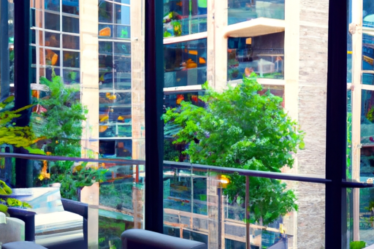
Emerging Trends in the Asia Pacific Hospitality Industry
Welcome to the Weekly Asia Pacific Hospitality Newsletter! In this edition, we will be discussing the emerging trends in the Asia Pacific hospitality industry. The hospitality industry in this region has been experiencing rapid growth and transformation, driven by various factors such as changing consumer preferences, technological advancements, and evolving market dynamics.
One of the key trends that has been observed in the Asia Pacific hospitality industry is the rise of experiential travel. Today’s travelers are seeking unique and immersive experiences that go beyond just staying in a hotel. They want to engage with the local culture, explore off-the-beaten-path destinations, and participate in authentic activities. As a result, hotels and resorts are increasingly focusing on providing curated experiences that cater to these demands. From cooking classes and cultural tours to adventure activities and wellness retreats, hotels are going the extra mile to create memorable experiences for their guests.
Another trend that is gaining momentum in the Asia Pacific hospitality industry is the integration of technology. With the increasing use of smartphones and the internet, travelers are becoming more tech-savvy and expect seamless digital experiences during their stay. Hotels are leveraging technology to enhance guest experiences, streamline operations, and improve efficiency. For instance, many hotels now offer mobile check-in and keyless entry systems, allowing guests to bypass the front desk and go straight to their rooms. Additionally, hotels are using data analytics to personalize guest experiences, offering tailored recommendations and personalized services based on individual preferences.
Sustainability is also a growing concern in the Asia Pacific hospitality industry. With the increasing awareness of environmental issues, travelers are becoming more conscious of their carbon footprint and are actively seeking eco-friendly accommodation options. Hotels are responding to this demand by implementing sustainable practices such as energy-efficient lighting, water conservation measures, and waste management systems. Some hotels are even going a step further by incorporating renewable energy sources and using locally sourced materials in their construction and operations. By adopting sustainable practices, hotels not only contribute to environmental conservation but also attract environmentally conscious travelers.
The Asia Pacific hospitality industry is also witnessing a shift in the target market. Traditionally, the industry has focused on catering to international tourists. However, there has been a significant rise in domestic tourism in recent years, driven by the growing middle class and increased disposable income. Hotels are adapting to this change by tailoring their offerings to cater to the needs and preferences of domestic travelers. This includes providing localized experiences, offering regional cuisine, and incorporating cultural elements into their design and decor.
Lastly, the Asia Pacific hospitality industry is embracing the concept of co-living spaces. Co-living, which involves shared living spaces with private bedrooms and communal areas, is gaining popularity among millennials and digital nomads. These spaces provide a sense of community and foster social interactions, making them an attractive option for long-term stays. Hotels are recognizing this trend and are incorporating co-living spaces into their properties, offering flexible accommodation options for those seeking a more social and collaborative environment.
In conclusion, the Asia Pacific hospitality industry is experiencing several emerging trends that are shaping its future. From experiential travel and technological integration to sustainability and the rise of domestic tourism, hotels are adapting to meet the changing demands of today’s travelers. By staying abreast of these trends and embracing innovation, the Asia Pacific hospitality industry is well-positioned to thrive in the years to come. That’s all for this edition of the Weekly Asia Pacific Hospitality Newsletter. Stay tuned for more updates and insights in the next issue!
Top Destinations for Luxury Travel in the Asia Pacific Region

Welcome to the Weekly Asia Pacific Hospitality Newsletter! In this edition, we will be exploring the top destinations for luxury travel in the Asia Pacific region. Whether you are seeking a relaxing beach getaway or an adventurous city escape, this region offers a plethora of options to cater to your every desire.
One of the most popular luxury destinations in the Asia Pacific is Bali, Indonesia. Known for its stunning beaches, lush landscapes, and vibrant culture, Bali has become a haven for luxury travelers. From luxurious beachfront resorts to private villas nestled in the jungle, there is no shortage of opulent accommodations to choose from. In addition to its natural beauty, Bali also offers a wide range of activities such as spa retreats, yoga retreats, and world-class dining experiences.
Another top destination for luxury travel in the Asia Pacific is the Maldives. This tropical paradise is renowned for its crystal-clear waters, pristine white sand beaches, and luxurious overwater villas. The Maldives is the perfect destination for those seeking ultimate relaxation and seclusion. With its abundance of luxury resorts and private islands, you can indulge in spa treatments, gourmet dining, and water sports activities while surrounded by breathtaking natural beauty.
For those looking for a cosmopolitan luxury experience, Tokyo, Japan is a must-visit destination. As one of the most technologically advanced cities in the world, Tokyo offers a unique blend of tradition and modernity. From Michelin-starred restaurants to high-end shopping districts, Tokyo caters to the most discerning luxury travelers. Immerse yourself in the city’s vibrant culture by visiting historic temples, exploring traditional markets, and experiencing the world-famous Japanese hospitality.
Moving on to Thailand, Phuket is a top choice for luxury travelers in the Asia Pacific. With its stunning beaches, luxurious resorts, and vibrant nightlife, Phuket offers a perfect blend of relaxation and excitement. Indulge in spa treatments, enjoy world-class dining, or embark on a yacht charter to explore the nearby islands. Phuket truly has something for everyone, making it a popular destination for luxury travelers from around the world.
Last but not least, the Gold Coast in Australia is a hidden gem for luxury travel in the Asia Pacific. Known for its pristine beaches, world-class golf courses, and luxury resorts, the Gold Coast offers a unique blend of natural beauty and urban sophistication. Whether you want to relax on the beach, explore the lush hinterland, or indulge in fine dining, the Gold Coast has it all.
In conclusion, the Asia Pacific region offers a wide range of top destinations for luxury travel. From the tropical paradise of the Maldives to the vibrant cityscape of Tokyo, there is something to suit every luxury traveler’s taste. Whether you seek relaxation, adventure, or cultural immersion, these destinations will exceed your expectations. So pack your bags and get ready to embark on a luxurious journey through the Asia Pacific region.
Sustainability Initiatives in Asia Pacific Hotels and Resorts
Welcome to the Weekly Asia Pacific Hospitality Newsletter! In this edition, we will be focusing on the sustainability initiatives taking place in hotels and resorts across the Asia Pacific region. As the world becomes more conscious of the environmental impact of the hospitality industry, many establishments are taking proactive steps to reduce their carbon footprint and promote sustainable practices.
One notable initiative is the increasing use of renewable energy sources in hotels and resorts. Many establishments are installing solar panels on their rooftops to harness the power of the sun and generate clean energy. This not only reduces their reliance on fossil fuels but also helps to lower their electricity bills. Some hotels are even going a step further by implementing energy-efficient lighting systems and appliances, further reducing their energy consumption.
Water conservation is another key focus for hotels and resorts in the Asia Pacific region. With water scarcity becoming a growing concern, establishments are implementing various measures to reduce water usage. Many hotels have installed low-flow showerheads and faucets in guest rooms and public areas, which significantly reduces water consumption without compromising guest comfort. Additionally, some resorts are implementing rainwater harvesting systems to collect and reuse rainwater for irrigation and other non-potable purposes.
Waste management is also a top priority for sustainable hotels and resorts. Many establishments are implementing recycling programs to minimize the amount of waste sent to landfills. They provide separate bins for guests to dispose of recyclable materials such as paper, plastic, and glass. Some hotels even compost organic waste from their kitchens and gardens, turning it into nutrient-rich soil for their landscaping needs.
To further promote sustainability, hotels and resorts are also focusing on sourcing local and organic products. By supporting local farmers and businesses, establishments not only reduce their carbon footprint but also contribute to the local economy. Many hotels have started growing their own organic gardens, where they cultivate fruits, vegetables, and herbs for use in their restaurants. This not only ensures the freshness and quality of the ingredients but also reduces the need for long-distance transportation.
In addition to these initiatives, hotels and resorts are also taking steps to educate and engage their guests in sustainable practices. Many establishments provide information in guest rooms about their sustainability initiatives and encourage guests to participate by reusing towels and linens, turning off lights and air conditioning when not in use, and using water responsibly. Some hotels even organize eco-friendly activities and tours, allowing guests to explore the local environment while learning about conservation efforts.
Overall, sustainability initiatives in Asia Pacific hotels and resorts are gaining momentum. By implementing renewable energy sources, conserving water, managing waste, sourcing local and organic products, and engaging guests in sustainable practices, establishments are not only reducing their environmental impact but also setting an example for the industry. As travelers become more conscious of their carbon footprint, they are increasingly choosing hotels and resorts that prioritize sustainability. Together, we can create a greener and more sustainable future for the hospitality industry in the Asia Pacific region.


